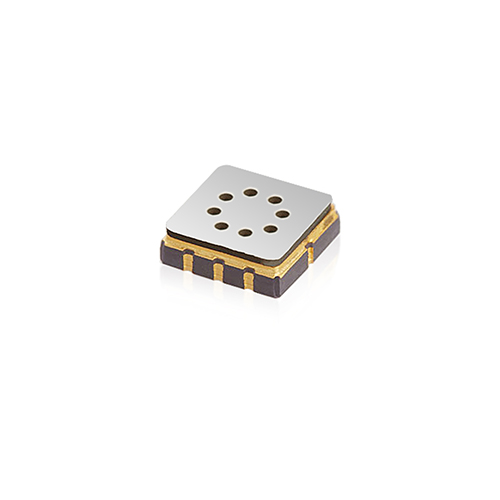MEMS temperature sensor
The principle of the MEMS temperature sensor is: when the external ambient temperature changes, the silane coupling agent on the MEMS chip combines with the silica gel surface to undergo a chemical reaction, causing the chemical properties of the silane to change accordingly. When this change exceeds the critical value of the silane , will cause the silane coupling agent to interact with the silica gel surface.
Since the MEMS chip is a three-dimensional integrated component, when the external environmental temperature changes exceed a critical value, local stress and strain will occur on the silicon surface on the MEMS chip. The stress will produce a chemical reaction on the chemical properties of the silane surface and produce micro-cracks with a micro-trench structure on the silicon surface. The interaction between the opening and closing of these microcracks and the changes in the chemical properties of the silicon surface in the microgrooves will lead to a chemical interaction between the silane and the silicone and an increase in the temperature of the silicone surface. When the temperature of the external environment increases, an oxidation reaction will occur between the active silicides that chemically react with Si-Ag to produce an oxide layer at the silicon interface, causing silane to adsorb on the surface and form Si-Ag bonds; Other reactions on the silicon surface do not occur to enable Si-Al bonding.
In recent years, microelectromechanical systems (MEMS) technology has developed rapidly and is widely used in sensors, actuators and controllers in many fields, such as aerospace, navigation and control, computers, household appliances and electronic equipment, and military manufacturing. field. Among them, temperature sensors, as an important component of MEMS sensors, have been widely used in various application fields. This article will introduce to you the classification, characteristics and working principles of MEMS temperature sensors. The MEMS temperature sensing system is a multi-functional MEMS sensing device. It converts temperature into electrical signals through thermal elements, and then amplifies and logically operates this signal through a digital interface to convert it into a control signal and outputs it to a controller or other devices. Control circuit;
Many things in our daily lives are completed through automated equipment, and in these automated equipment, temperature sensors play a very important role.
But almost all smartphones now have temperature sensors. Why?
MEMS sensors are mainly used in industrial environment, medical and health and military fields. They are currently one of the most mainstream and widely used sensor types.
Because MEMS technology is smaller and lighter than traditional sensors, it is easier to install in various places where temperature needs to be measured.
In addition, MEMS sensors can easily enter the field of consumer electronics because of their low cost.
There are already a large number of products designed based on MEMS sensors. For example, the smartphone we mentioned earlier uses one of the temperature measurement chips.
MEMS temperature sensor application prospects
MEMS temperature sensor can be said to be a very huge market, and its main application areas are consumer electronics, medical and industrial control.
In the field of consumer electronics, MEMS sensors can be used for temperature monitoring functions in various smart terminals due to their small size, light weight, low power consumption, and long life.
For example, the temperature measurement chip in a smartphone is one of the MEMS sensors, which is mainly used to monitor the temperature inside the phone.
In addition, MEMS thermometers can be used to detect whether there is a fever and whether the body temperature is too high to avoid burns or heatstroke.







